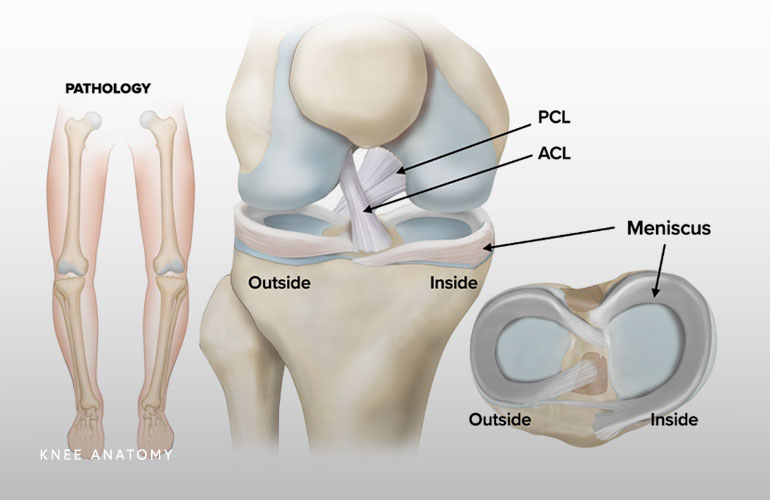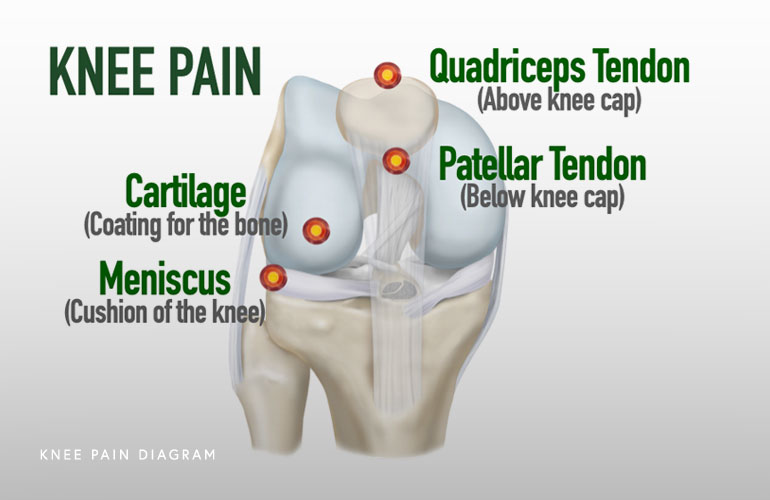Non-Surgical Knee Pain Treatment
What is knee pain?
Knee pain can be a major source of discomfort that can lead to other problems such as an abnormal gait and back issues. The pain can have a profound impact on your life by impairing your capacity to perform a number of activities, ranging from those of your normal day-to-day routine to participating in sports and recreational activities. If you begin to notice that the pain lingers for more than a couple of weeks or is more severe than what you typically experience, then it’s important to consult a physician for further evaluation.
Initial Evaluation with my practice
At your initial evaluation with our team, x-rays will typically be obtained in order to further evaluate the bone structure and anatomy. Following the x-rays, a physical exam will help to determine where the source of the pain may be. In some cases, further diagnostic imaging, such as a MRI or CT scan, may be required to confirm the diagnosis and help establish potential treatment options for you.

Where is your pain?
Your treatment will be tailored according to where the symptoms are coming from. Depending on where you feel the pain and other clues from your history and physical exam, we can determine where your pain is coming from. If pain presents going up or downstairs, it may be due to a problem in the kneecap joint. If you experience pain when squatting, it is probably caused by meniscus or cartilage tearing. Locking or clicking sensation on one side of the knee may also be due to a meniscus tear. Instability usually refers to ligament issues.

How to manage your knee pain
In our practice, we are very conservative in regard to our first line of treatment. We believe that most people benefit from non-surgical approaches first, as the majority of our patients will improve without the need of an invasive procedure. In the case of cartilage or meniscus tears, conservative approaches can significantly help with the pain. With the appropriate muscular training and activity modification, symptoms can often be relieved completely, allowing many patients to return to their desired level of activity without ever having required surgery.
Read below for some of the options that we encourage our patients to try after their initial visit with our team.
Anti-inflammatory Drugs
Anti-inflammatory medications can be utilized as a first line of treatment, primarily when treating mild to moderate pain associated with inflammation. Joints and tendons sometimes get inflamed after experiencing an injury, accident, or repetitive use of the joint. In some cases, inflammation can occur with no eliciting reason at all. In these cases, anti-inflammatories can significantly help to reduce the inflammation, resulting in a decrease in your pain. It is important to know the dosage in order to avoid side effects from these medications. Additionally, they should not be taken for an extended period of time, as they can lead to further systemic problems.
Physical therapy
Physical therapy is a key component in treating knee pain. Physical therapy can target several areas that can help mitigate and often times solve knee pain. Under the guidance of a skilled physical therapist who specializes in knee pathology, physical therapy can help strengthen muscles around the knee joint, increase flexibility and maintain range of motion of the joint, decrease the inflammation of the joint or tendons surrounding the knee, and correct knee joint positions that might be adding to your overall pain.
Injections
Injections are another reasonable conservative treatment option to consider when struggling with knee pain, as they can:
- Help diagnose where exactly the pain is coming from. This type of injection is called a diagnostic knee injection.
- Help treat the pain by decreasing inflammation within the joint or tendons surrounding the knee joint.
Diagnostic Knee Injections
For this purpose, a numbing drug (lidocaine) is injected directly into the joint. If you experience relief from pain, or at least a reduction in more than 50% of the pain, immediately following the injection, then we can confirm that the knee joint is the actual source of pain. However, if there is no relief in pain, it means that the pain is coming from somewhere else besides the joint.
Pain Relief
- Intra-articular injections of cortisone, hyaluronic acid, or platelet rich plasma (PRP) injection made directly into the knee joint can provide symptomatic relief. Ultrasound-guided injections for different purposes, like meniscus tears, use dedicated, precise, high-resolution ultrasound equipment that allows the provider to target the injections directly into a specific area, maximizing therapeutic outcomes. Following the injection, pain relief varies from patient to patient. Some may feel symptomatic relief within two to five days. However, if a patient feels no relief within ten days following the injection, the patient is unlikely to gain any additional improvement and further diagnostic testing may be needed to identify other options for relief.
- Patellar tendon or quadriceps tendon injections are often prescribed when the diagnosis is thought to be a symptomatic tendonitis. Cortisone can sometimes lead to more degeneration, and therefore, we usually recommend the use of PRP for this pathology. An ultrasound is used to help guide the provider in administering the injection directly into a specific area.
At a Glance
Dr. Jorge Chahla
- Triple fellowship-trained sports medicine surgeon
- Performs over 500 surgeries per year
- Assistant professor of orthopedic surgery at Rush University
- Learn more


